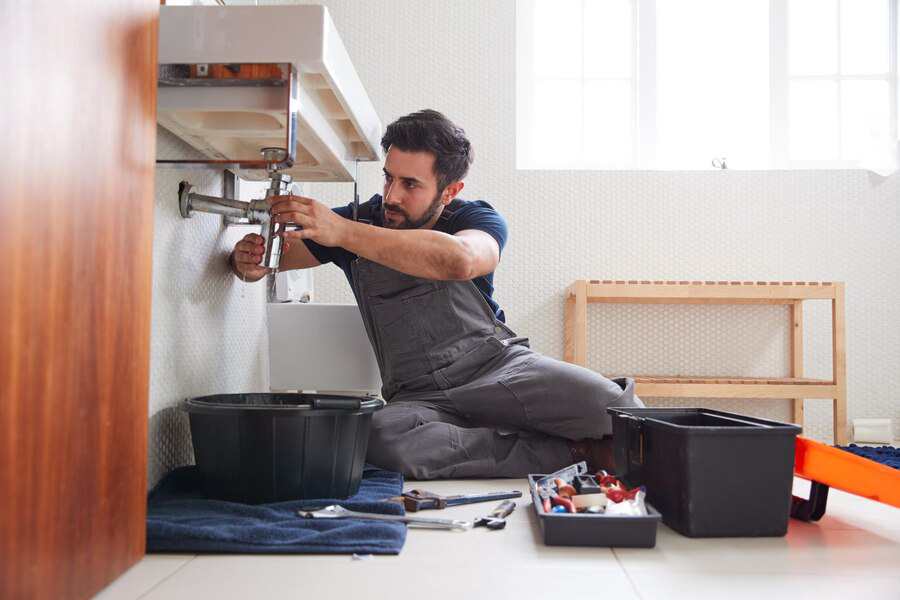Do you hear that persistent drip, drip, drip? It’s not just annoying; it could be costing you money and wasting precious water. Leaking taps are one of the most common household plumbing issues, but they’re often neglected until they become a bigger problem. If you’re dealing with Leaking Taps Repair, don’t worry – there are several quick fixes you can try before calling in a plumber. Let’s dive into some effective solutions to stop that drip and save both water and money.
Leaking taps not only inflate water bills but can also lead to structural damage and mold growth if left unchecked. By promptly addressing these issues, you not only conserve water but also preserve the integrity of your home. Regular maintenance and timely repairs are crucial in preventing costly damages and ensuring efficient water use. Whether it’s replacing a worn-out washer or cleaning the valve seat, taking action at the first sign of a leak can save you from larger headaches down the line
Understanding the Impact of Leaking Taps
Before we get into the fixes, let’s understand why fixing a leaking tap is so important. A single tap that drips once per second can waste over 3,000 gallons of water per year! Not only does this drive up your water bill, but it also puts unnecessary strain on water resources, making it an environmental concern as well. Taking prompt action to fix leaks not only saves you money but also helps conserve water – a vital resource for our planet.

Common Causes of Leaky Taps
Leaky taps can be caused by a variety of issues, including worn-out washers, corroded valve seats, loose parts, or even high water pressure. Identifying the root cause is crucial for determining the appropriate fix. Here are some common types of taps and their typical problems:
- Compression Taps: These are among the oldest types of taps and are prone to washer wear. If you have a compression tap that leaks from the spout, it’s likely due to a worn-out washer.
- Ball Taps: Found in newer homes, ball taps can leak due to worn-out seals or springs inside the handle.
- Cartridge Taps: These taps are known for their durability but can still leak over time due to worn-out cartridges or O-rings.
- Ceramic Disc Taps: Highly reliable but can leak if the ceramic discs inside become damaged or dirty.
Understanding which type of tap you have and the specific issue affecting it will guide your repair efforts.
Quick Fixes for Leaking Taps
When dealing with a leaking tap, quick action can prevent water waste and potential damage to fixtures. Here are three common fixes you can try yourself before calling a professional plumber:
Fix 1: Replace the Washer
To start, turn off the water supply to the leaking tap. Locate the handle screw under the decorative cap and carefully remove the handle. Inside, you’ll find the stem and a small rubber washer. Inspect the washer for wear or damage—often evidenced by cracks or distortions. Replace the old washer with a new one of the exact size and type to ensure a proper fit and seal. Reassemble the tap by reversing the steps, ensuring all components are snug but not overtightened. Turn the water back on and check for leaks.
Fix 2: Replace the O-Ring
Begin by turning off the water supply and draining any remaining water from the tap. Depending on the tap design, carefully remove the spout or handle to access the internal components. Locate the O-ring—a small, round rubber seal typically around the valve stem or inside the spout assembly. Remove the old O-ring and replace it with a new one of the same size and type. Apply a thin coat of plumber’s grease to the new O-ring to facilitate a smooth installation and enhance the seal. Reassemble the tap, ensuring all parts are aligned correctly and tightened securely. Turn the water supply back on gradually to check for leaks.
Fix 3: Clean or Replace the Valve Seat
First, turn off the water supply and drain the tap by opening it fully. Use a seat wrench or a tool specifically designed for your tap model to remove the valve seat. Inspect the seat closely for corrosion, mineral buildup, or damage. Clean the valve seat thoroughly using a wire brush or a cloth soaked in vinegar to dissolve mineral deposits. If the seat is severely damaged or corroded beyond cleaning, replace it with an exact match from your hardware store. Reinstall the cleaned or new valve seat by threading it back into place with the seat wrench. Reassemble the tap carefully and turn the water supply back on to check for leaks.
Preventive Maintenance Tips to Avoid Tap Leaks
Preventive maintenance is key to avoiding the annoyance and potential damage caused by tap leaks. Regularly inspecting your taps and implementing these preventive measures can help you maintain a drip-free home. Start by checking for any signs of wear or corrosion on the taps’ external components, such as handles and spouts. Additionally, ensure that all fittings are tightened properly to prevent leaks from developing over time.
Inside the tap, consider replacing washers and O-rings every few years, as these components naturally wear out with use. Monitor water pressure in your home, as high pressure can strain tap seals and lead to leaks. Finally, consider installing water-saving devices or aerators on your taps to reduce water flow and minimize wear on internal components. By taking these preventive steps, you can extend the life of your taps and reduce the likelihood of leaks occurring.
Signs Your Tap Needs Professional Repair
While some tap issues can be resolved with DIY fixes, certain signs indicate that it’s time to call in a professional plumber. If you notice consistent dripping or pooling water around the base of the tap, it could indicate a more serious problem, such as a worn-out valve seat or damaged internal components. Similarly, if your tap produces unusual noises when turned on or off, it may signal underlying issues that require professional expertise to diagnose and repair.
Another red flag is reduced water flow or inconsistent water temperature, which could indicate blockages or internal damage within the tap assembly. Ignoring these signs may lead to further damage to your plumbing system and potentially higher repair costs down the line. A licensed plumber has the experience and tools to accurately assess the problem and provide a lasting solution, ensuring your taps function efficiently and effectively for years to come.
Importance of Promptly Fixing Leaking Taps
Promptly addressing leaking taps is crucial for several reasons beyond just saving water and money. Water leaks can lead to structural damage in your home, including mold growth and water stains on walls and ceilings. These issues not only compromise the integrity of your property but also pose health risks to occupants. Additionally, ignoring leaking taps can contribute to water wastage, which is a significant concern in regions experiencing water scarcity or drought.
From an economic standpoint, fixing leaks promptly can lower your water bills and prevent costly repairs associated with water damage restoration. Furthermore, taking action to repair taps promptly demonstrates environmental responsibility by conserving a precious resource. Whether you opt for DIY repairs or enlist the help of a professional plumber, addressing leaking taps promptly ensures the sustainability of your home and contributes to water conservation efforts on a larger scale.
Conclusion
Repairing leaking taps is not just about stopping an annoying drip; it’s about preserving water, protecting your home from damage, and reducing your environmental footprint. By understanding the common causes of tap leaks and implementing quick fixes like replacing washers or O-rings, you can save money on water bills and prevent potential water-related issues in your home. Prompt action also demonstrates your commitment to sustainability and responsible home maintenance.
Ready to fix that persistent tap leak or need professional plumbing services in Chain Valley Bay, NSW? Contact EZI Plumbing today at +61 448467788. Our experienced team is here to help with all your plumbing needs, from leak repairs to installations and maintenance. Let us handle the plumbing so you can enjoy peace of mind knowing your home is in good hands. Reach out to us now to schedule a service or to learn more about how we can assist you.

